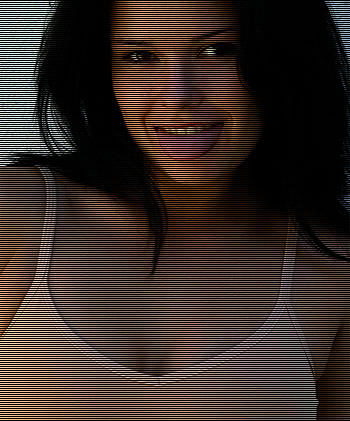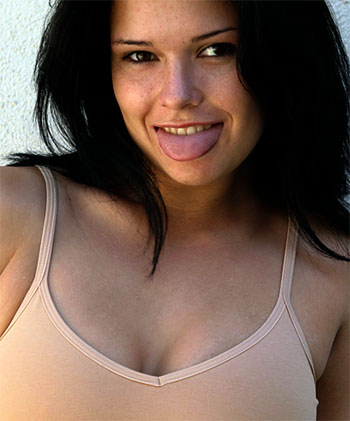CRT Primer
|
Updated: April 2006 |
Projector Resolution 'Sweet Spot'
Each CRT projector model has what is
known as a resolution ‘sweet spot’, depending on
the tube size and construction, as well
as the quality of the internal
circuitry. Speaking in very general
terms, it is possible to feed too much
video information to a projector, so
much so that the circuitry and the tubes
cannot accurately process the large
amount of video information fed to it.
A less detailed picture results, and
some loss of detail may be noticed if
the ‘sweet spot’ is exceeded.
The general idea is to increase resolution until the individual scanlines are
close enough together such that you do not see scanlines from your seating
position. If the resolution is too low, scanlines will be visible (and
distracting). If the resolution is too high, scan lines will overlap
creating a softer or smeared picture.
For example, a 7” CRT system with ES
focusing is best suited for line
doubling (480p) or tripling (720p) if the tubes are in
good shape. Feeding a line quadrupled
signal (960p) into one of these projectors will
show less detail and a bit of smearing
will occur on occasion.
The below settings are approximately
what I have found are the best signal to
be fed to the projectors. Naturally
these findings are subject to
interpretation, and your own
experimentation is encouraged to find
the picture that is best for you.
ES focus:
7” tubes: Line doubling (480p) or tripling
(720p)
8” tubes: Line tripling (720p)
9” tubes: Line quadrupling (960p)
EM focus:
7” tubes: Line tripling (720p)
8” tubes: Line tripling (720p) or quadrupling
(960p)
9” tubes: Line quadrupling (960p) and above
The screen aspect ratio will also
determine how well the projector will be
able to resolve certain resolutions. For
example: An image projected onto a 4x3
ratio screen uses more tube surface area
vertically than an image projected onto
a 16x9 screen. This means that the 4x3
image has more space to display the
scanlines so more scanlines may be
displayed before they touch. A
real world example of this would be that
8" EM tubes are probably limited to 720
lines (720p) on a 16x9 screen but can
resolve 960 lines (960p) on a 4x3
screen.
HDTV
Where does HDTV fit into this? The two most common resolutions
for HDTV are 720p and 1080i.
720p: As you can see from the list above, even an
Entry-Level 7" ES focusing CRT projector
should be able to display a 720p HDTV signal in most cases.
1080i: This resolution is actually easier for a projector to display as the
image is interlaced (ie: it takes 2 passes to build a picture) and is equivalent
to 540p in terms of bandwidth/scanrate requirements. Every CRT projector
listed on this site (other than a couple of the extremely lowest-end models) is
fully capable of resolving 1080i HDTV.
1080p: This is a new and upcoming resolution found on some HD-DVD and Blu-Ray
discs that (IMHO) is completely over-hyped and does not look much different than
1080i in real world tests. While many CRT
projectors are capable of displaying a 1080p signal, only
High Performance 9" units will do so adequately (though some will argue
that very high end 8" machines do have the resolving capabilities to do 1080p
justice). If you decide that
you do require 1080p resolving capabilities then you need to take this into
consideration. For projectors with 8" and 7" tubes, it's best to use 1080i
or 720p resolutions for HDTV.
Below are simulated examples of what may be seen as you feed a projector different
resolutions or levels of scaling:
Projector is fed too high of a resolution (image is smeared as the
scanlines are overlapping):

Projector is fed too low of a resolution (space between scanlines is too obvious):

Projector is fed the best resolution suited for this particular unit
(image is perfect as scanlines are just touching!):

|




